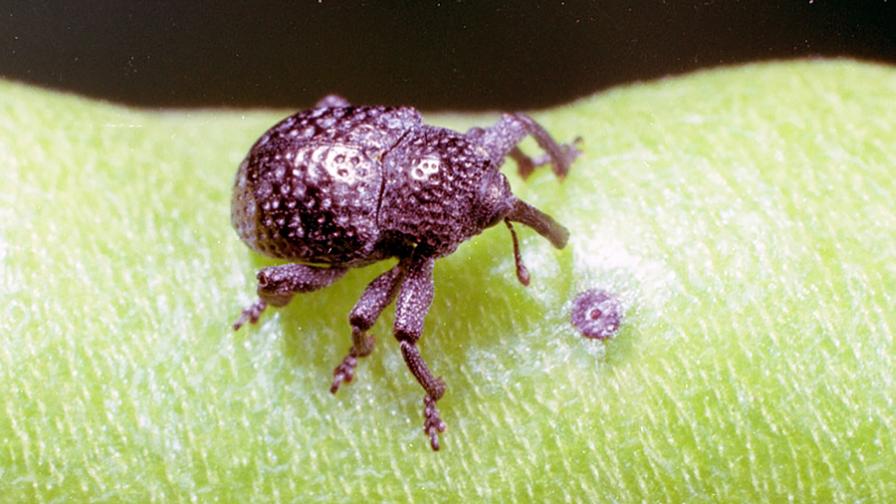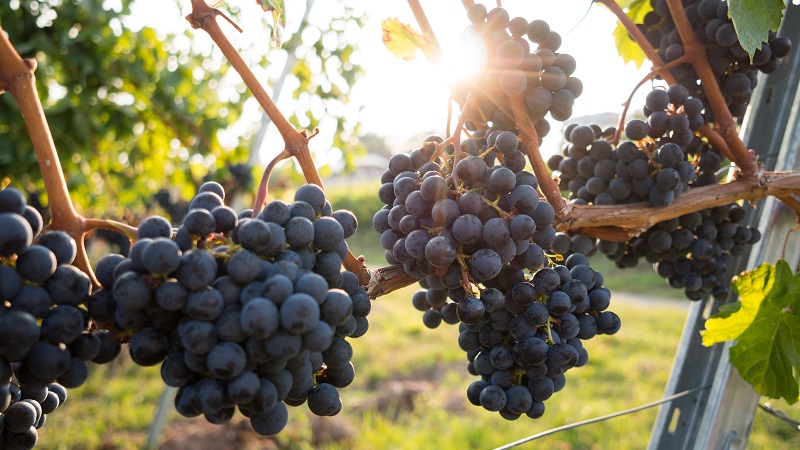Protect Your Peas by Taking Control of Cowpea Curculio

The cowpea curculio is the most destructive insect pest of southern peas. It occurs primarily in the Southeastern U.S. and Latin America.
Photo courtesy of Clemson University
The adult is a hump-backed, bronze-tinged, black “snout” beetle that has small dents on the wing covers and on the upper side of the body. The beetle measures less than a ¼ inch in length.
Small, brown, wart- or blister-like spots are found on pods damaged by curculios. These are produced when the adult punctures the pod to feed or lay eggs. Damaged peas have small, dark, indented spots and often contain grubs. Damage is caused by both adult and larval stages, which feed on seeds within the pods.
The larva is pale yellow in color, although the head and thoracic plate are yellowish brown. The larva lacks legs but has deep furrows around its body that bear stiff bristles.
Survival and Spread
The cowpea curculio feeds principally on legumes. All peas and beans may be injured, but cowpea is the preferred host. Weeds and other crops are primarily attacked early in the year before cowpea is available.
The cowpea curculio overwinters in the adult stage, emerging in the spring to begin feeding. Adults overwinter in the soil and under organic debris.
Oviposition usually does not occur until cowpeas are available, which is often June or July. There are two generations annually in the Deep South but only one further north. The adults are long-lived and require 30 to 40 days to complete one generation.
The egg is oval in shape and white in color. Eggs are deposited in the pod of the host plant or within the seed in the pod. The female deposits her eggs in feeding sites, with only a single egg deposited in each feeding puncture. Each female deposits an average of 112 eggs over about 45 days.
There are four larval instars. At completion of the larval stage, the insect drops to the soil and creates a pupal cell. The pupa resembles the adult in shape and size but is yellowish white in color. After transformation to the adult, the beetle remains in the pupal cell for a few more days while it hardens and then digs to the surface to emerge.
Management Methods
Because the adult rarely flies, crop rotation is beneficial. Tillage and destruction of alternate crop, weed hosts, and crop residues are also helpful in reducing the population of overwintering beetles.
The fungus, Beauveria sp., is an important factor in winter survival of adults. Ants significantly reduce the rate of successful pupation by cowpea curculio.
The only feasible approach to control cowpea curculio is a preventive spray program. Curculios will be a serious pest of peas from first bloom until harvest. The current recommended spray schedule begins with a spray at first bloom and repeat treatments made on a five-day schedule until five applications have been made.
Insecticide resistance has become a problem for some classes of insecticides. Consult UF/IFAS recommendations for labeled insecticides.










